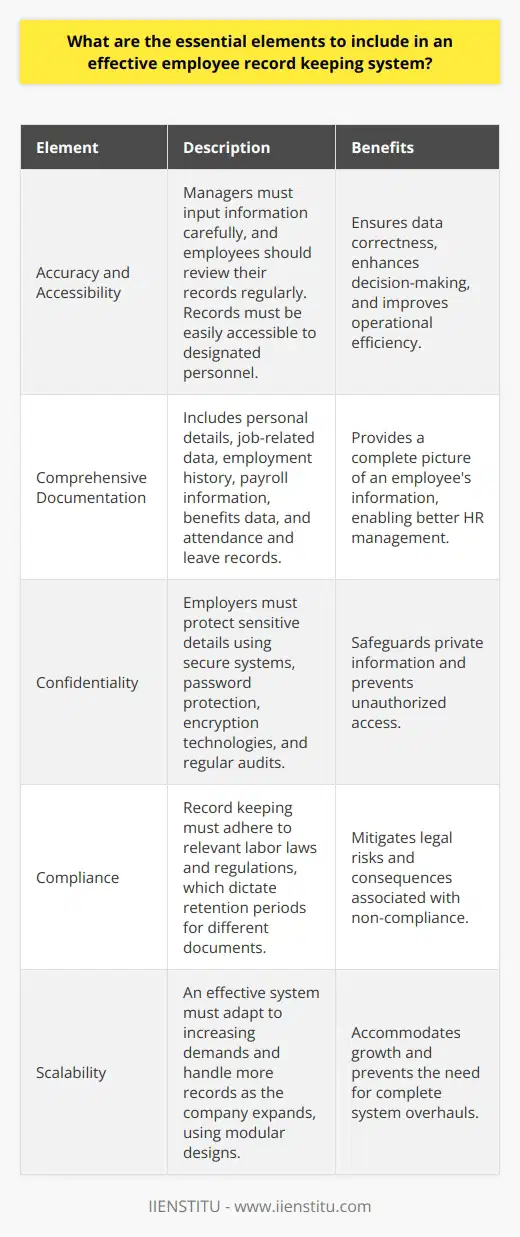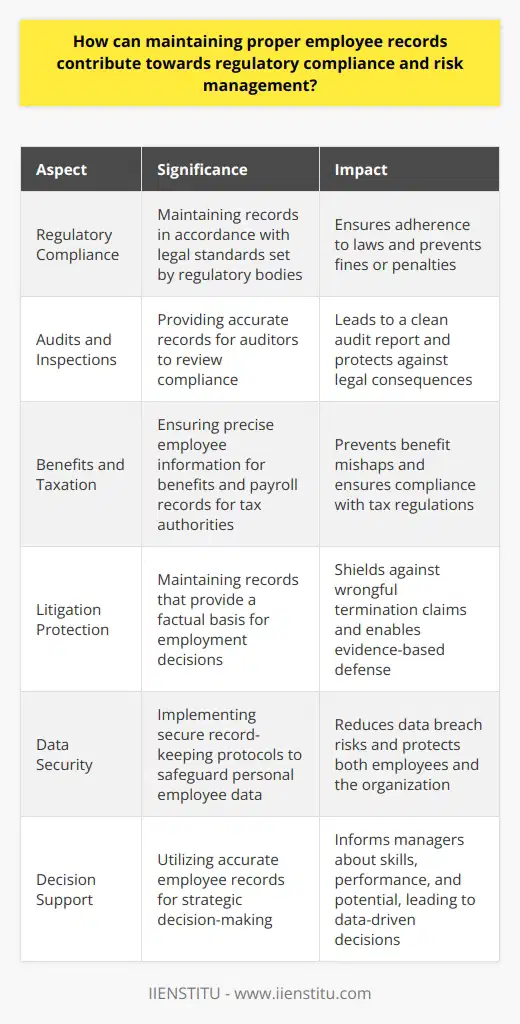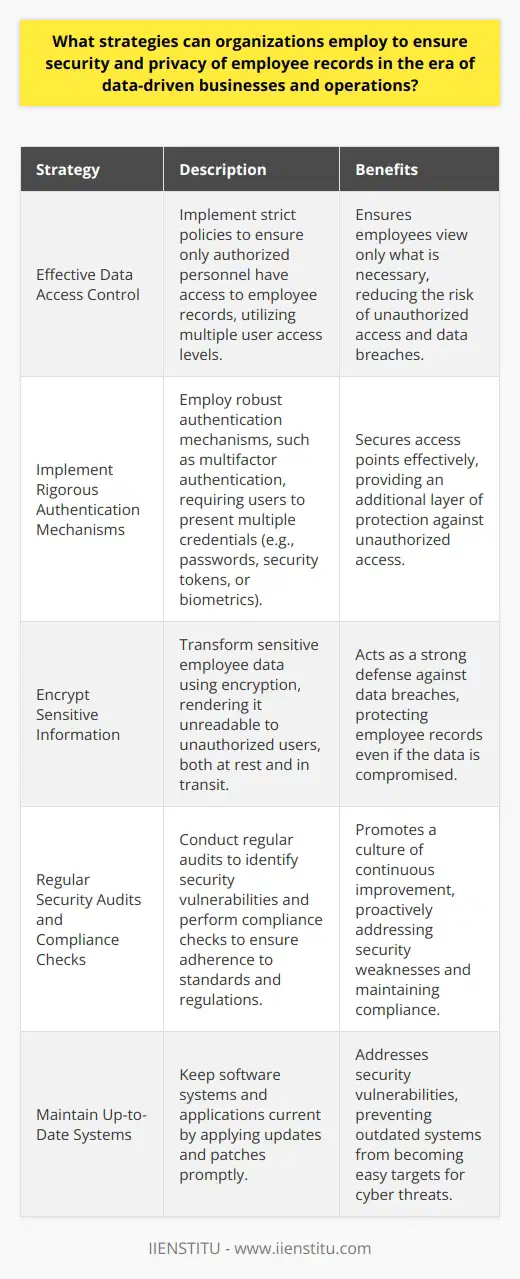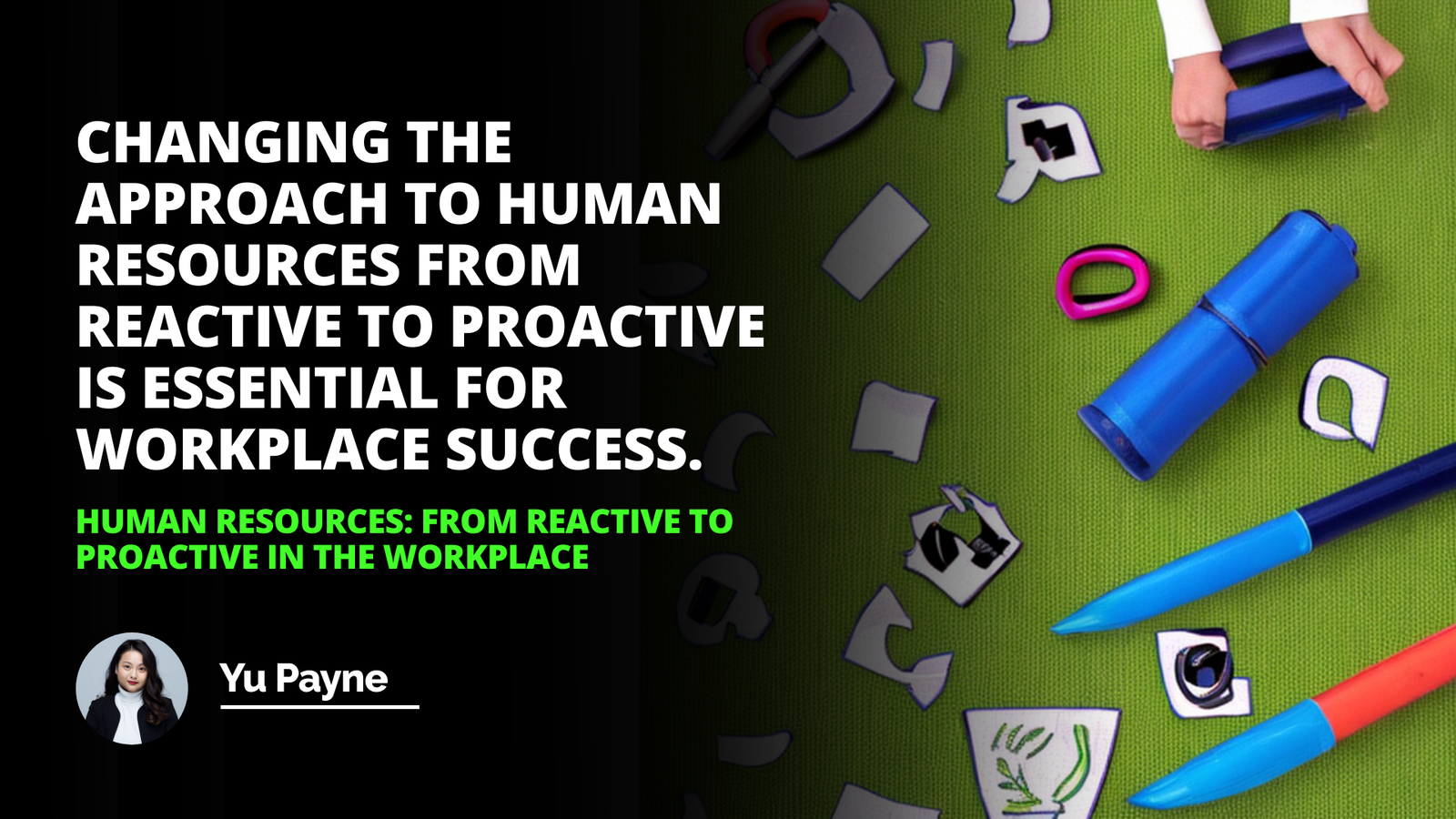
I remember my early days working in a small company's human resources department. Back then, the importance of meticulous employee records was something we often underestimated. We'd stack piles of paperwork in dusty cabinets, thinking we'd never need them. But boy, were we wrong! One day, an unexpected labor audit came knocking, and that's when it hit us like a ton of bricks—proper record-keeping isn't just bureaucratic red tape; it's the backbone of effective HR management.
The Heart of HR: Understanding Employee Records
Defining Employee Records
So, what exactly are employee records? Well, they're not just files collecting dust. Employee records are comprehensive collections of personal details, employment contracts, performance reviews, training certifications, payroll information, and even disciplinary actions. Think of them as the chronicles of an employee's journey within the company.
Proactive Corporate Hr Strategy For İmproved Employee Engagement
Most Searched Keyword For Managing Employees Lacking Accountability İn The Workplace
Defining Employee Records
Employee records encompass a wide array of documents and information collected by an organization related to its employees. These records include personal details, job applications, employment contracts, performance reviews, disciplinary actions, training progress, payroll information, and much more. They serve as the foundational evidence for all employee-related decisions and actions within a company.
The variety of employee records can be broad, but they are generally categorized into basic personal information, job-related records, training and development logs, pay and benefits files, and employment history. Each type of record has its unique requirement and method of maintenance. For example, hr certification course training records must not only display the qualifications of the employee but also the validity and relevance to their current role.
Importance of Employee Records
Effective HR management hinges on the availability and accuracy of employee records. They are pivotal for managers and HR professionals in making informed decisions about promotions, pay increases, disciplinary actions, and more. Furthermore, high-quality employee records enable organizations to forecast HR needs, analyze workforce trends, and ensure an efficient allocation of resources.
In today's data-driven world, maintaining comprehensive and precise employee records becomes synonymous with organizational maturity. Companies that recognize the value of these records are better equipped to meet their strategic objectives and manage their workforce competently.
Legal Requirements for Employee Records
Businesses are legally bound to manage employee records in accordance with various laws and regulations. Compliance requires awareness and understanding of applicable labor laws, tax codes, privacy legislation, and other regulations that impact record-keeping. From the Fair Labor Standards Act (FLSA) to the Health Insurance Portability and Accountability Act (HIPAA), each law imposes specific mandates on how certain employee records should be handled and protected.
Failure to comply with these legal requirements can result in penalties, lawsuits, and damage to an organization's reputation. Thus, staying up-to-date on these mandates is not optional but essential to a company's operations and moral fabric.
Confidentiality and Security of Employee Records
The confidentiality and security surrounding employee records are paramount. With the rise of cyber threats and data breaches, it is crucial for organizations to protect sensitive employee information. Implementing robust security measures and following strict confidentiality protocols are no longer just best practices; they are necessities.
Best practices in this regard include secure storage systems, controlled access policies, regular audits, and employee training in data protection. Employees must trust that their personal information is safe, and companies must act as the responsible custodians of that information.
Employee Records Management
Some companies may opt to operate paper-based systems, whereas others might employ advanced HR management software. Whichever method is chosen, it must be reliable, scalable, and compliant with legal mandates. Digital tools, such as certificate courses online, can bolster the competence of HR professionals in this digital age, thus enhancing the overall effectiveness of record-keeping processes.
Despite the advantages of digital record management, challenges such as data migration, system integration, and user adoption may arise. Addressing these challenges proactively is critical to successful employee records management.
Benefits of Proper Employee Records Management
Proactive and proficient management of employee records reaps numerous benefits. It enhances HR functions like recruitment, onboarding, performance management, and employee retention. Moreover, it underpins strategic HR initiatives, such as workforce planning and talent management.
Businesses that excel in record-keeping often witness gains in efficiency, productivity, and competitive advantage. They are also better positioned to respond to legal inquiries and audits swiftly and confidently, thus averting potential crises.
Case Studies of Effective Employee Records Management
To illustrate the real-world impact of effective employee record-keeping, let's consider companies that have successfully transformed their HR operations. Take, for example, a multinational corporation that implemented a centralized record-keeping system. The result was not only enhanced compliance and data quality but also a streamlined process that saved thousands of man-hours previously lost to administrative tasks.
Another example could highlight a small business that leveraged HR software to automate record-keeping, allowing them to scale their workforce rapidly while maintaining compliance and oversight. These case studies underscore the transformational effect that efficient employee records management can have on an organization.
Most Searched Keyword: Hr Research For Organizational Success
Historical Development Of Human Resources Practices From 1900 To Present
These records are often grouped into categories like:
1- Personal Information: Names, addresses, contact details.
2- Job-Related Documents: Contracts, job descriptions, reassignment request letter tips and information.
3- Performance Data: Reviews, goals, achievements.
4- Training and Development Logs: Courses attended, hr certification course completions.
5- Compensation Details: Salary history, bonuses, benefits.
Each of these plays a crucial role in the day-to-day and strategic operations of human resources departments.
The Lifeblood of HR Management
For human resources professionals, employee records are more than just data—they're tools for making informed decisions. Whether it's considering a promotion, managing benefits, or addressing a grievance, having accurate information at your fingertips is invaluable. I recall a time when a payroll discrepancy arose, and without proper records, resolving it would've been a nightmare!
Strategic HR management relies heavily on trends and analytics derived from these records. They help answer questions like:
Are our training programs effective?
Do we have a high turnover in a particular department?
How diverse is our workforce?
By keeping detailed records, human and resources, and human resources, teams can craft strategies that align with the company's goals.
Navigating the Legal Maze: Regulatory Compliance
The Legal Landscape of Employee Records
Now, let's chat about the not-so-glamorous but utterly essential aspect—compliance. Organizations are legally required to maintain certain employee records. Laws like the Fair Labor Standards Act (FLSA) and the Occupational Safety and Health Act (OSHA) dictate what records to keep and for how long.
Key legal requirements include:
Retention Periods: Knowing how long to keep certain documents.
Privacy Laws: Ensuring employee information is confidential.
Accuracy: Keeping records up-to-date and error-free.
Mess this up, and you’re not just facing fines—you could be staring down the barrel of serious reputational damage.
Keeping It Under Lock and Key
In today's digital age, data breaches are all too common. Human resources information is particularly sensitive, and it's up to hr human teams to safeguard it. Implementing security measures like encryption, access controls, and regular audits is non-negotiable.
A few best practices we've adopted include:
Regular Training: Educating staff on data protection protocols.
Access Limitations: Only authorized personnel can view sensitive records.
Secure Disposal: Properly destroying records that are no longer needed.
After all, trust is a two-way street. Employees need to know that their personal information isn't going to end up in the wrong hands.
Mastering Employee Records Management
Choosing the Right System
Gone are the days when towering file cabinets ruled the HR office. Today, it's all about digital solutions. But with so many options out there, how do you choose?
Consider:
Scalability: Will the system grow with your company?
User-Friendliness: Is it intuitive or will it require extensive training?
Integration: Does it play well with other systems, like payroll or scheduling software?
In my own experience, investing in a robust human resource hr management system revolutionized the way we handled records. We reduced errors, saved time, and—believe it or not—made the auditors happy!
Tackling Challenges Head-On
Switching to a new system isn't always smooth sailing. Common hiccups include:
Data Migration Issues: Transferring data accurately from old systems.
Employee Resistance: Getting everyone onboard with the new way of doing things.
Cost Considerations: Ensuring the investment delivers value.
To mitigate these, it's crucial to have a clear implementation plan, involve stakeholders early, and perhaps most importantly, keep communication lines open.
The Ripple Effect: Benefits of Effective Record-Keeping
Boosting Efficiency and Beyond
When employee records are properly maintained, the benefits ripple throughout the organization. Some of the perks include:
Improved Decision-Making: Access to accurate data supports better choices.
Enhanced Compliance: Reduces the risk of legal issues.
Time Savings: Less time spent searching for documents means more time for strategic initiatives.
Employee Trust: Demonstrates professionalism and reliability.
I can't emphasize enough how much smoother our HR processes became once we got our act together with record-keeping. It's like night and day!
Real-Life Success Stories
Let me share a couple of examples:
Case Study 1: A mid-sized tech company was struggling with high turnover. By analyzing their employee records, they discovered that lack of career development was a major issue. Armed with this info, they implemented new training programs, and turnover dropped by 15% in a year.
Case Study 2: A manufacturing firm faced hefty fines due to compliance failures. After overhauling their record management system, they not only avoided penalties but also improved operational efficiency by 20%.
These stories highlight how effective record-keeping isn't just about avoiding negatives—it's about creating positives!
Bringing It All Together
Looking back, if there's one thing I've learned, it's that human resources resources are only as good as the information they rely on. Proper employee records management isn't just the job of HR; it's a critical component that supports the entire organization's health and success.
So, whether you're a seasoned pro or just dipping your toes into the world of HR, remember: take care of your records, and they'll take care of you.
References
Armstrong, M. (2014). Armstrong's Handbook of Human Resource Management Practice (13th ed.). Kogan Page.
Dessler, G. (2016). Human Resource Management (15th ed.). Pearson Education.
Storey, J. (2007). Human Resource Management: A Critical Text (3rd ed.). Thomson Learning.
Tyson, S. (2015). Essentials of Human Resource Management (6th ed.). Routledge.
Mello, J. A. (2014). Strategic Human Resource Management (4th ed.). Cengage Learning.
Note: Remember, the key to stellar HR management lies in the details—never underestimate the power of well-kept records!
Frequently Asked Questions
What are the essential elements to include in an effective employee record keeping system?
Essential Elements of an Employee Record Keeping System
Accuracy and Accessibility
An effective employee record keeping system demands accuracy. Managers must input information carefully. Employees should review their records regularly. This process ensures data correctness.
Records must be accessible. Designated personnel require ease of retrieval. Fast access enhances decision-making and operational efficiency. Systems should support both ease and accuracy.
Comprehensive Documentation
Comprehensive documentation forms the core. This includes personal details and job-related data. Employee records encompass various categories. Personal information includes demographics and contact details. Job information covers titles, roles, and responsibilities. Employment history reflects promotions, transfers, or disciplinary actions.
Other categories demand equal attention. Payroll information entails salaries, bonuses, and deductions. Benefits data capture insurance, retirement plans, and perks. Attendance and leave records monitor absences and vacations.
Confidentiality
Confidentiality remains crucial. Employers must protect sensitive details. Records contain private information. Only authorized individuals should have access.
Secure systems help safeguard this data. Password protections and encryption technologies prevent unauthorized access. Regular audits cement the system's security.
Compliance
Regulatory compliance guides record keeping. Laws dictate which records companies must maintain. These often vary by region. Employers should stay informed about these requirements.
Relevant labor laws influence record retention. They define periods for keeping different documents. Failing to comply results in legal consequences. Compliance mitigates such risks.
Organization
Organization simplifies record management. A logical structure aids retrieval and analysis. Employers might organize records by department, role, or tenure.
Digital solutions frequently offer better organization. Modern software categorizes and tags records. Such systems streamline the organization further.
Continuity and Backup
Continuity ensures minimal disruption. An effective system allows for the maintenance of records through organizational changes. Backup processes protect against data loss. This includes natural disasters and cyber threats.
Employers should establish regular backup schedules. Cloud storage offers secure, off-site backups. These practices enhance data resilience.
Efficiency
Efficiency represents an overarching goal. Automated systems often provide greater efficiency. They reduce manual entry and the potential for errors. Time-saving features like batch processing improve productivity.
Integration with other HR systems proves beneficial. This creates a seamless flow of information across platforms.
User Friendliness
A user-friendly interface fosters engagement. Staff of varying tech proficiency must navigate the system. Intuitive design and clear instructions aid users.
Training programs support user friendliness. They equip employees with necessary knowledge and skills. Continuous support and updates maintain this aspect.
Scalability
Scalability accommodates growth. An effective system must adapt to increasing demands. It should handle more records as the company expands.
Modular designs offer scalability. They allow for the addition of new features as needed. This prevents the need for complete system overhauls.
Review and Update Mechanism
A robust review and update mechanism is essential. Employers must conduct periodic reviews. This ensures records stay current and reflect actual conditions.
Update mechanisms allow for correction and data refinement. Systematic updates preserve data relevance and usefulness. They also maintain regulatory compliance.
These elements, when cohesively integrated, form a robust employee record keeping system. Employers must diligently implement and maintain these components. Doing so underpins effective HR management. It enhances overall business operations and prepares the groundwork for future growth.

How can maintaining proper employee records contribute towards regulatory compliance and risk management?
Maintaining proper employee records is crucial for any organization. This practice serves as a foundation for regulatory compliance and effective risk management. Here, we elaborate on the significance of this process.
Regulatory Compliance
Documentation and Law
Regulatory bodies demand meticulous records. Employers must document employment history, personal details, and payroll data. Proper records ensure adherence to legal standards.
Audits and Inspections
Auditors review employee records. They check for compliance with existing laws. Accurate records can result in a clean audit report. This protects against fines and penalties.
Benefits and Taxation
Incorrect employee information can lead to benefit mishaps. Tax authorities require precise payroll records. Ensuring accuracy in these records is non-negotiable.
Risk Management
Litigation Protection
Records can shield against wrongful termination claims. Documentation provides a factual basis for employment decisions. Evidence-based defense becomes possible with good records.
Data Security
Personal employee data needs safeguarding. Secure record-keeping protocols reduce data breach risks. This protects both employees and the organization.
Decision Support
Managers use employee data for strategic decisions. Accurate records inform about skills, performance, and potential. Decisions become more data-driven and less risky.
Cultural Integrity
Diversity and inclusion efforts depend on good data. Maintaining proper records tracks progress in these initiatives. This fosters a positive workplace culture.
In summary, detailed and consistent record-keeping practices are essential. These practices contribute significantly to meeting regulatory demands and managing organizational risks. Employers benefit from fewer legal complications and streamlined operations. Therefore, businesses must invest in effective record management systems. This ensures long-term stability and success.

What strategies can organizations employ to ensure security and privacy of employee records in the era of data-driven businesses and operations?
The Imperative of Securing Employee Records
Organizations have embraced data-driven strategies. Yet, challenges abound. Among them is securing employee records. The task is non-negotiable. It is crucial for compliance and trust.
Effective Data Access Control
Controlling access to data is key. Organizations must ensure strict policies are in place. Only authorized personnel should have access. Multiple user access levels prove beneficial. They ensure employees view only what’s necessary.
Implement Rigorous Authentication Mechanisms
Robust authentication mechanisms are essential. They secure access points effectively. Multifactor authentication offers increased security. It requires users to present multiple credentials. These could be passwords, security tokens, or biometrics.
Encrypt Sensitive Information
Data encryption transforms information. It becomes unreadable to unauthorized users. Encryption applies to data at rest and in transit. It acts as a strong defense against breaches.
Regular Security Audits and Compliance Checks
Regular audits are fundamental. They highlight security vulnerabilities. Compliance checks ensure adherence to standards and regulations. Both actions promote a culture of continuous improvement.
Maintain Up-to-Date Systems
Software updates are critical. They patch security vulnerabilities. Systems and applications must stay current. Outdated systems become easy targets for cyber threats.
- Promote Employee Awareness
- Establish Clear Policies
- Encourage Strong Password Practices
Promote Employee Awareness
Employee neglect can cause data breaches. Awareness programs educate employees. They focus on best practices for data privacy. Informed employees become an asset. They protect the organization’s sensitive data.
Establish Clear Policies
Clear policies provide guidelines. They cover handling and sharing of sensitive information. Policies must be explicit and enforceable. Compliance becomes easier to measure.
Foster a Culture of Privacy
A privacy-centric culture safeguards employee records. It includes training programs and privacy by design principles. Organizations must strive for this cultural shift. It becomes a protective layer for employee data.
Regular Software and Hardware Maintenance
Hardware also poses risks. Regular maintenance is critical. It ensures physical devices storing data remain secure. Neglect can lead to system failures or breaches.
Organizations face an ongoing battle. They must secure employee records diligently. These strategies offer strong protection in the data-driven age. They safeguard privacy and promote a secure operational environment.



